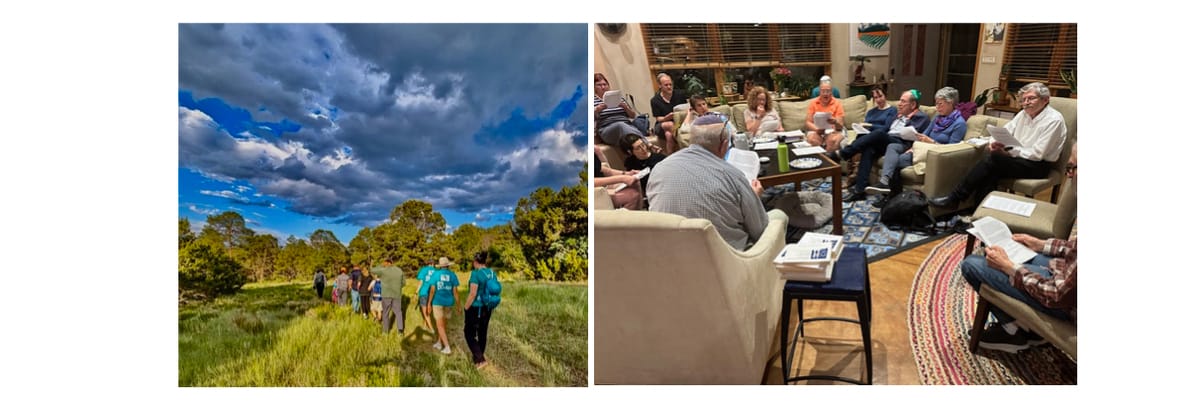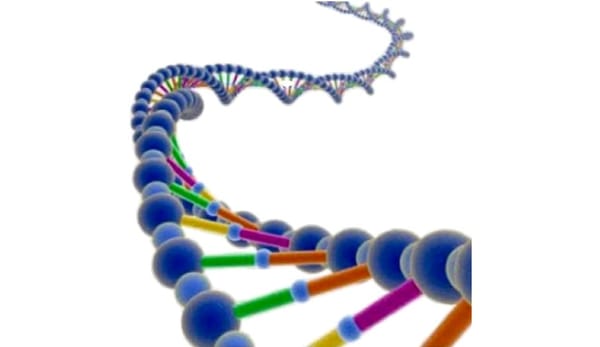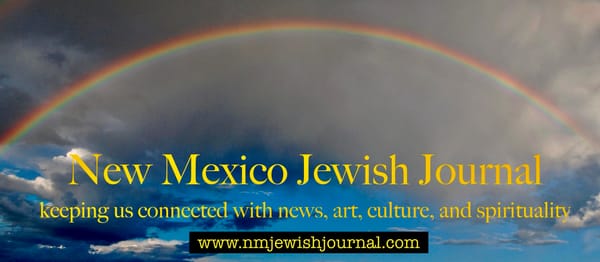Shavuot - the holiday, the teachings, the food!

Shavuot is one of the major holidays in the Jewish calendar – as Rabbi Min Kantowitz notes in her article here – although it often passes unnoticed in American Jewish homes. Falling exactly seven weeks after Passover, this two-day holiday (June 11-13 in 2024) commemorates the date that God gave the Torah to the Jewish people on Mount Sinai. Traditionally observed with late- or all-night gatherings to read and discuss the Torah and a recitation of the Ten Commandments, the holiday encourages us to continue receiving this special gift, actively and enthusiastically.
Another Shavuot custom that has endured and evolved is to eat dairy foods. Reasons behind this tradition vary, as Rabbi Min also notes -- but who needs an excuse to eat cheesecake??
We hope you’ll enjoy this montage of contributions from our community about celebrating the Shavuot holiday, including photos of a Leil Tikkun Shavuot (all-night learning) with Shabbat with Friends and HaMakom, conducted in person in Santa Fe and beamed around New Mexico; Rabbi Neil Amswych’s check-in from Temple Beth Shalom in Santa Fe; Congregation B'nai Israel's overnight camp-out complete with s'mores!; Shavuot Thoughts from Rabbi Min Kantrowitz; and an enlightening Shavuot teaching from Shlomo Karni of Chavurah Hamidbar.
Be sure to check out the two dairy recipe stories. Claudette Sutton’s Culinary Time Travel: Easy, Cheesy Sambusak describes a Sephardic food that, after reading, you will actually feel compelled to make at any time of the year. And Diane Joy Schmidt’s "I use Mrs. Brickner's recipe from the Fairmount Cookbook. She made it just the way my mother did" might ring a bell of familiarity whether or not you have roots in Cleveland!
Rabbi Neil Amswych reports that congregants stayed up til 1:30 am at Temple Beth Shalom in Santa Fe, where they also reportedly had a cheesecake contest earlier in the evening.
Rabbi Dov Gartenberg and Rabbi Jack Schlacter of Shabbat With Friends and HaMakom held a joint Shavuot celebration

Leil Tikkun Shavuot (all-night learning) organized by Shabbat with Friends NM and HaMakom, Santa Fe, SWF convener Rabbi Dov Gartenberg reads aloud, Rabbi Jack Schlacter of HaMakom is seen seated on the right, and a Yom Tov candle lighting. Held in-person in Santa Fe and beamed virtually to folks all around New Mexico on Erev Shavuot, June 11th, hosted by Len Goodman and Deborah Avren. The event also included a Siyum (the completion of a unit of Torah study) for the Exploring the Jewish Experience courses in ABQ and Santa Fe. Photos by Stuart Cohen.
B'nai Israel families had a Shavuot overnighter by camping out and experiencing nature.

This year for Shavuot several Bnai Israel families joined together to learn about and commit themselves to a deeper appreciation of nature and environmental good deeds. We met up at a campground nestled in the Sandia mountains. Led by Zoe Wissel, we went on a guided nature walk, then we had a traditional blintz and potluck meal and more environmental talk. With tents set up and the light dimming, we made a beautiful campfire together, discussed words of Torah led by Marissa Wald, sang tunes of togetherness led by our own Rabbi Jonathan Angress, made s’mores, and kids went to sleep sticky with the sweetness of chocolate. - as related by Marissa Wald.
Shavuot Thoughts
Rabbi Min Kantrowitz shares that "we offer praise and give thanks for the harvest, for our freedom, and for cheesecake.":
Even here, in New Mexico, sometimes considered the diaspora of the diaspora, where Jewish communities are scattered and sparse, a few core practices remain as iconic cultural treasures. Among them is the time honored (and well practiced) Spring custom of eating cheesecake at Shavuot.
Seven weeks after we celebrate Passover, we arrive at the holiday of Shavuot (literally ‘weeks’). Despite the fact that Shavuot is a major holiday in the Jewish calendar cycle, one of the three pilgrimage festivals (along with Passover and Sukkot), it often passes unnoticed in many American Jewish circles. The holiday is distinguished by it’s many names and varied traditions: Shavuot (from the Biblical commandment to count seven weeks after Passover), Chag ha Katzir (holiday of reaping) from the fact that it celebrates the beginning of the wheat harvest, Chag haBikkurim (holiday of the first fruits), Zman Matan Torateinu (time of the giving of our Torah) and Atzeret (conclusion) referring to the ending of the 49 day period of counting the Omer. For many American Jews, what is most memorable about Shavuot is eating lots of dairy….cheesecake, blintzes, bourekas are on the menu!
Why? Some say it’s because the since Shavuot traditionally celebrates the giving of the Torah, (for this reason many Jews stay up all night studying Torah, in preparation for receiving Torah today) in which a verse from Song of Songs (4:11) compares the Torah to honey and milk—the Torah provides our spiritual nourishment. Some believe that when the Israelites received the Torah at Mt. Sinai they learned about the laws of kashrut (dietary laws) for the first time, and rather than consume the meat that had previously been prepared (not in line with the dietary laws), they ate only dairy foods after the Divine encounter at Sinai. Another idea involves the practice of gematria (each Hebrew letter has a numerical equivalent). The Hebrew word for milk, chalav, has a numerical value of 40. This number corresponds to the number of days Moses spent on Mt. Sinai receiving Torah. Shavuot usually occurs in late spring or early summer, which was when, in pre-industrial times, cows would be giving birth and farmers would have a ready supply of milk. For the same reason, spring was the traditional time of year for cheese-making - so farmers could preserve the abundance of milk to last for the rest of the year.
Whatever the reason for eating dairy on Shavuot, and by whatever name it is called, Shavuot is a happy holiday, where we offer praise and give thanks for the harvest, for our freedom, and for cheesecake.
A Teaching about Compassion and Shavuot
Shlomo Karni of Chavurah Hamidbar shares a teaching about Shavuot, noting that Moses was also given the Oral Law, where "an eye for an eye means monetary compensation.":
The festival of Shavuot ("Weeks") occurs a week of weeks, or forty nine days, after the first day of Pesach. It is one of the three pilgrimage festivals , along with Pesach and Sukkot, when farmers would flock to the Temple in Jerusalem to offer the seasonal produce of their fields. On Shavuot, this included: wheat, barely, vines, figs, pomegranates, olive oil and honey.
After the destruction of the Temple and the exile, the agricultural aspect of these festivals waned and only their religious aspects remained. To this day, though, many Jewish kindergartens, schools, synagogues and homes decorate their rooms with greenery, in symbolic memory of the agricultural aspect of Shavuot. In Israel, some agricultural farms celebrate a secular form of Shavuot, highlighting their achievements in farming during the past year.
Significantly, the religious aspect of all three festivals revolves around the major event in our ancient history, the liberation from slavery in Egypt: Pesach celebrates the Exodus; Shavuot – the giving of the Ten Commandments at Mt. Sinai, and Sukkot ("Booths") – the temporary dwellings of the children of Israel in the desert on their way to the Promised Land.
Remember the phrase, "Zeicher li'yetsiat Mitsrayim", "In memory of the Exodus from Egypt", which appears frequently in our daily, Shabbat and holiday prayers.
Jewish tradition holds that, in addition to the Ten Commandments, Moses also received on Shavuot the rest of the Torah, the so-called Written Law, with its 613 essential religious laws (mitzvot).
The same tradition holds that Moses was also given the Oral Law, the detailed extensions of these religious laws, found in the rabbinical Talmud literature. For example, "an eye for an eye", is a terse, extremely harsh, law found in the Torah.
The Oral Law expounds it with the detail, "an eye for an eye means monetary compensation," a humane (and binding!) formulation of this law.
Chag Sameach!
Shlomo Karni
Community Supporters of the NM Jewish Journal include these advertisers:
Community Supporters of the inaugural issue of the New Mexico Jewish Journal:
Jewish Community Foundation of New Mexico
Congregation Albert
Jewish Community Center of Greater Albuquerque
The Institute for Tolerance Studies
Shabbat with Friends: Recapturing Together the Joy of Shabbat
Temple Beth Shalom
Event advertisers:
Jewish Federation of El Paso and Las Cruces
Academy of Jewish Learning at Congregation B'nai Israel




